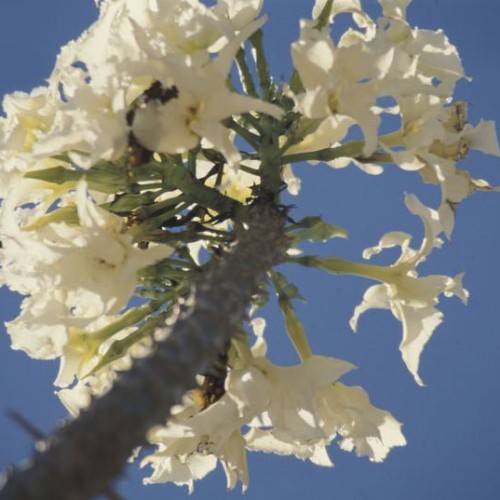
pachypodium
Pachypodium rutenbergianum
Cycle:
Perennial
Watering:
Minimum
Hardiness Zone:
10 - 11
Flowers:
Flowers
Sun:
Full sun
Leaf:
Yes
Growth Rate:
Low
Maintenance:
Moderate
Drought Tolerant:
Yes
Salt Tolerant:
Yes
Thorny:
Yes
Care Level:
Medium
watering
Pachypodium (Pachypodium rutenbergianum) should be watered at least once a week with enough water to thoroughly soak the medium, but it is important to allow the top layer of soil to dry out in between waterings. This plant enjoys moisture, but does not tolerate having wet feet. If the soil stays too wet, the plant can suffer from root rot due to excess moisture. During the warm summer months, the plant may require additional watering 2 or 3 times a week, and should be monitored closely. In the colder winter months, allow the soil to dry out completely before watering again.
sunlight
Pachypodium rutenbergianum is a low–growing, succulent–like shrub that thrives in full sunlight. This sun-loving plant requires at least 6-8 hours of direct sunlight per day to ensure proper growth. Too little sunlight may lead to leggy growth and poor flower production while too much sunlight may cause the leaves to burn. To maximize blooming, keep pachypodiums in full sun during the morning hours, offering some shade in the afternoon when the sun is at its hottest.
pruning
Pachypodium requires minimal pruning overall, as regular, moderate pruning will slow its growth rate and can lead to unbalanced growth. Pruning should mainly focus on removing cross-branches and any dead, diseased, or severely damaged parts. Pruning can be done in early spring, after the last frost before the growing season starts. The best way to prune pachypodium is to selectively remove branches that are crossing or competing with the main stem. Pruning should be done when the plant is actively growing, as this will ensure the best healing of any pruning wounds. It is best to avoid pruning in late autumn or winter, as this can potentially damage the plants. As pachypodium grows, it will naturally form some branches that will need to removed. This should be done as needed to maintain its desired shape and size.
